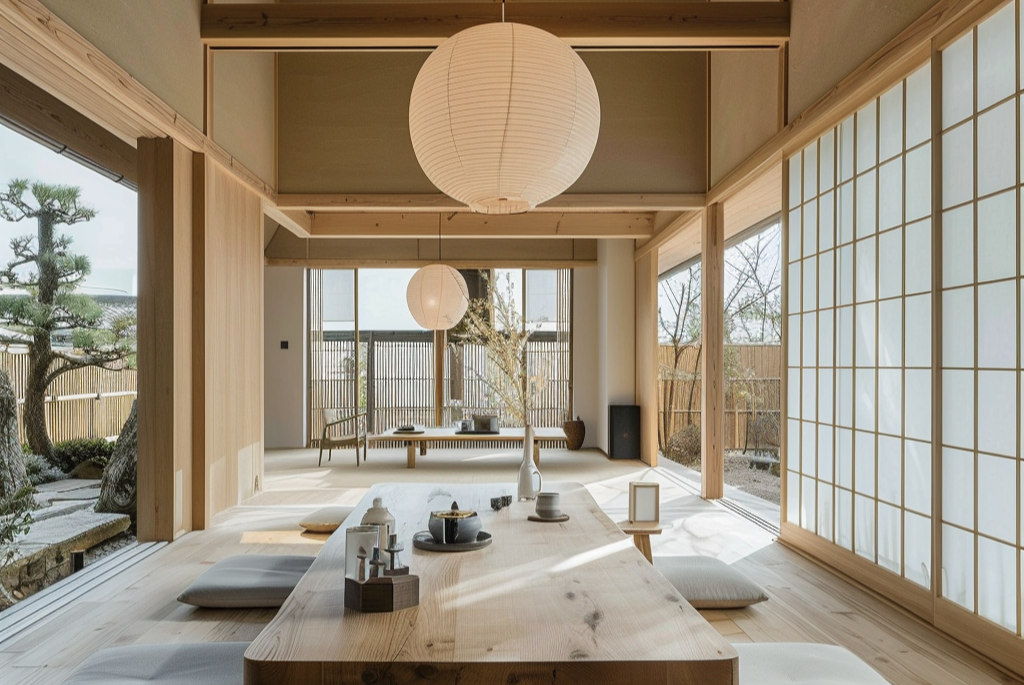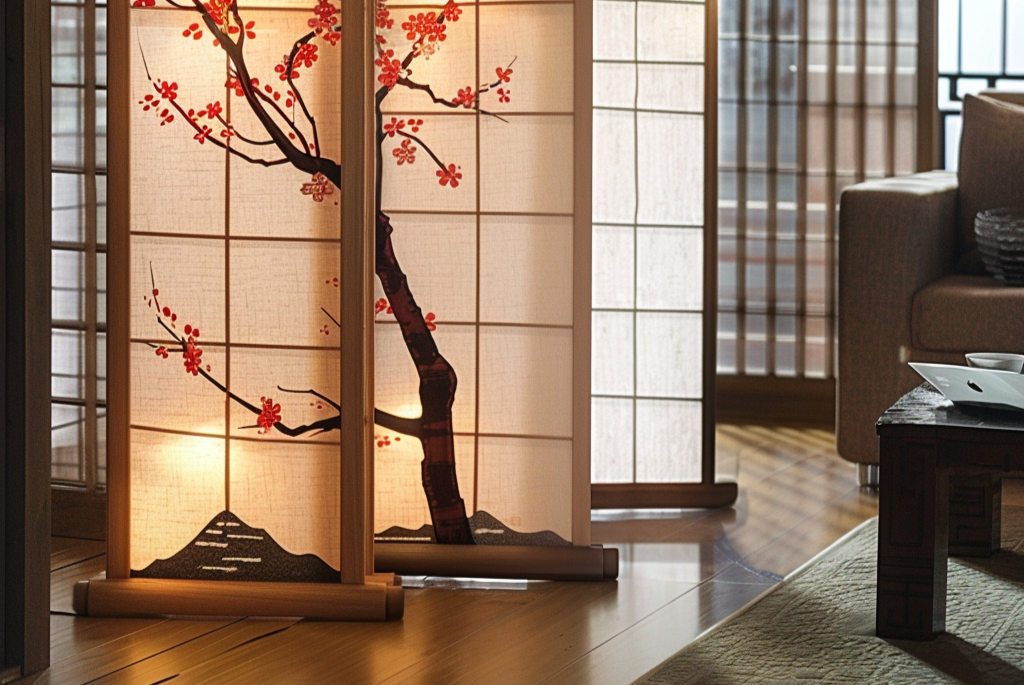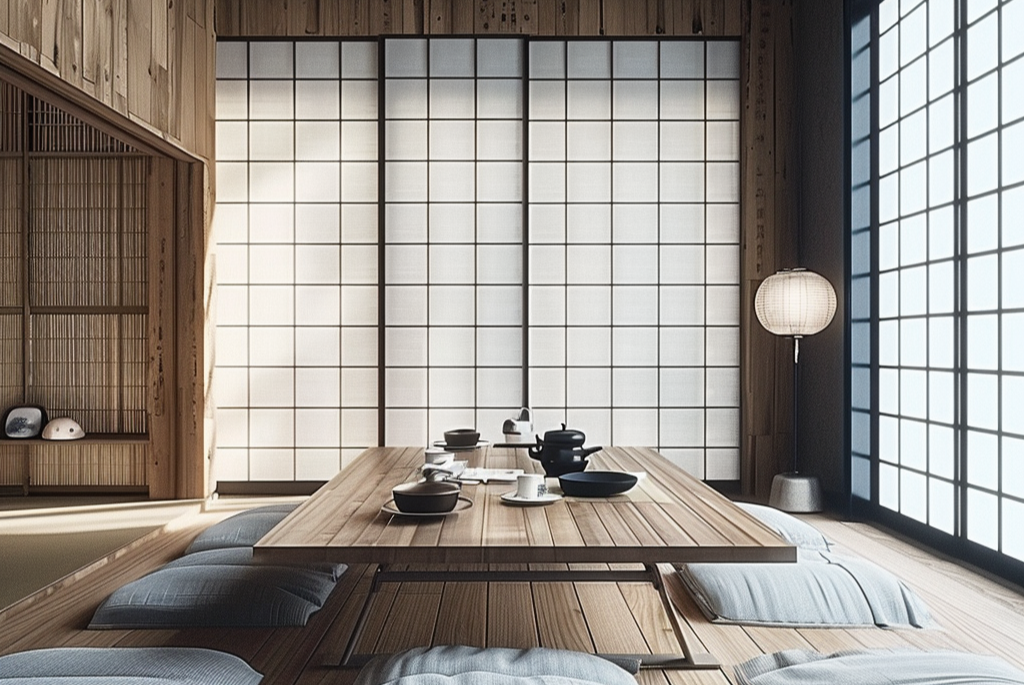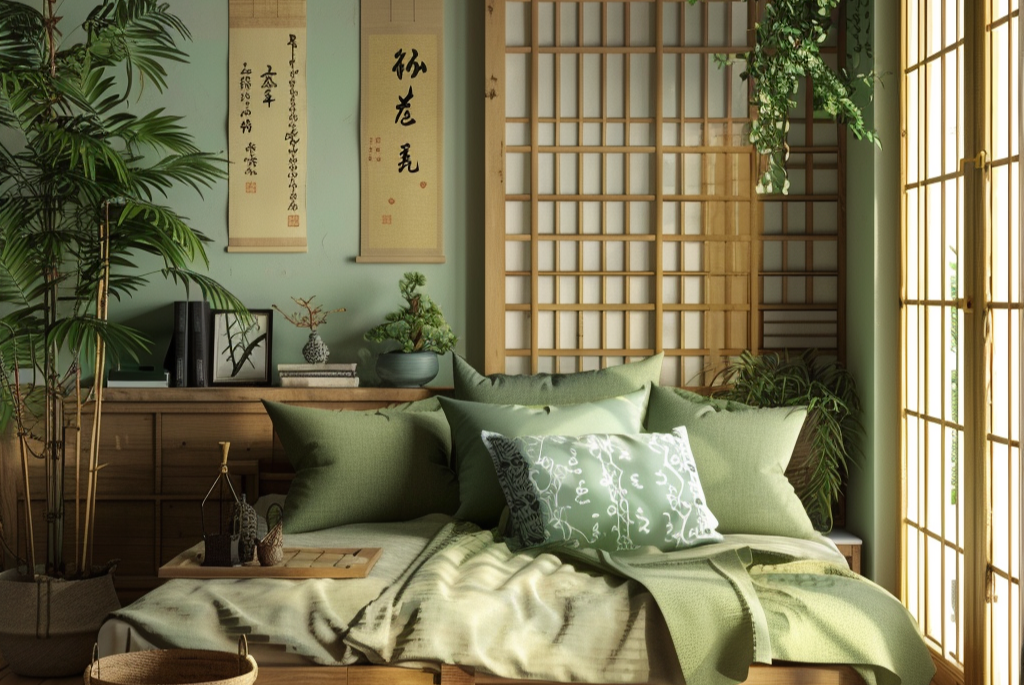Are you someone looking for minimalistic interior decor? Does the concept of ‘wabi-sabi’ pull you closer? Let us guess: you must have been highly inspired by Japanese Interior Designs. But confused about how to incorporate Japanese Interiors in your house? Well, we are here to guide you through all the details about Japanese-style interior design.
Japanese style interior design features simplicity and minimalism. It believes in the ‘wabi-sabi’ concept, which implies finding beauty in imperfection. Japanese interior design also deeply connects with nature, featuring greenery and natural materials like bamboo, wood, etc. Read this article until the end to explore Japanese house interior design.
Japanese Interior Design Principles
Japan has a unique culture, and so do its interior design principles. If you are inspired by Japanese culture, you must know that Japanese people prefer simplistic and minimalistic designs. The key criteria for Japanese interior design are simple, clean, decluttered, and minimalistic.

Japanese people also like to develop a deep connection with nature. Hence, you will find a lot of natural elements in a Japanese-styled home. You will find primarily wooden furniture, chairs made from wood and bamboo, and the usage of natural stones. You will also find shoji screens and tatami mats in a Japanese home. The primary principle followed in a Japanese interior is ‘Wabi-Sabi’, which signifies beauty in imperfections. For example, nature is beautiful in its own way, even if it’s not always perfect. This is why you will find so many natural and imperfect things in a Japanese-styled home that appears elegant at the same time.
Elements of Japanese Interior Design

Before you start planning to create a modern Japanese interior design, know about the critical elements of Japanese interior design:
- Tatami Mats: If you have visited any Japanese-themed restaurant, you must have seen straw mats used for decoration. Those mats are known as Tatami mats. They are used for seating in a Japanese-style interior.
- Shoji Screens: Sometimes, Shoji screens are also used in Japanese-themed restaurants. They are sliding doors or room dividers made with translucent paper on a wooden frame. It allows natural light to peep through.
- Futons: A futon is a versatile bedding that can be folded and kept away to optimize space. Japanese culture includes multipurpose furniture; hence, futons are common in Japanese interior designs.
- Tokonoma Alcove: Tokonoma Alcove is a free space often used to display artwork or keep flowers. It is another crucial element of Japanese interior design.
- Engawa Varandas: Another key element of a Japanese home is a Engawa Varanda. A wooden walkway surrounds the house, connecting the indoor and outdoor spaces.
- Minimalistic Furniture: Japanese homes feature minimalistic and low-profile furniture, prioritizing comfort and relaxation.
- Natural Materials: We can find extensive use of wood, bamboo, and natural stones to create a peaceful ambiance inside. It feels as if you are living in the lap of nature.
- Natural Light: A Japanese-themed home has abundant natural light, featuring big windows and open spaces.
- Indoor Plants: Greenery and indoor plants are another essential element in a Japanese-themed home as they bring a sense of peace and serenity to the house.
Color Palette of Japanese Interior Design

The philosophy of Japanese interior design is ‘wabi-sabi’. Hence, keeping that in mind, here are some of the suggested color palette ideas for your Japanese house interior design:
- Neutral Color Palette: A Japanese interior style is mainly dominated by a neutral color palette. Warm neutral shades like cream and beige are extensively used to bring warmth and comforting vibes to the house.
- Earthy Color Palette: Earthy color tones like shades of brown are used in Japanese interiors as they complement warm neutral tones like beige and cream. Shades of green are also used in Japanese-themed houses to develop a connection with nature and the outdoor world, making our house appear like a peaceful abode.
- Subtle and Pastel Color Palette: For a contemporary Japanese interior design, you may go for subtle and eye-soothing color palettes like pastel color palettes like soft blue, pink, yellow, and green to create a harmonious vibe in the house.
Furnitures of Japanese Interior Design:
As per the Japanese culture, they believe in the concept of ‘ma’, which signifies pause in time, interval, and the balance between emptiness and objects in space. This factor can be witnessed in Japanese homes with a beautiful balance of space amidst furniture.
The most distinctive thing about Japasene’s interior is the use of low-profile furniture. According to Japanese culture, people believe in leading a simple life with a deep connection with nature and the earth. This thing can be noticed in some Japanese-themed restaurants, too.
Some of the traditional Japanese furniture are:
- Zabuton- Floor cushions.
- Zaisu- Legless chairs.
- Chabudai- Short-legged tables.
The simple designs of this furniture give a minimalist vibe to the room without occupying too much space. For additional inspiration, check out Japandi Interior Design: Where Minimalism Meets Serenity.
Modern Japanese furniture displays both minimalism and practicality. Although, the basic specs of Japanese furniture, like sleek, simple, and clean lines, remain the same. But modern furniture has a contemporary vibe to it.
The primary focus of modern Japanese decor is innovative storage solutions. They focus on open floor layouts and decluttered spaces. As a result, modern storage options and multi-functional storage options like foldable futons and modular shelving units are commonly used in Japanese-styled homes.
That was all about Japanese interior design. We hope the details we have provided about the interior design of a Japanese house have helped your confusion to go away. If you have enjoyed our article, then keep us posted for more such articles.





